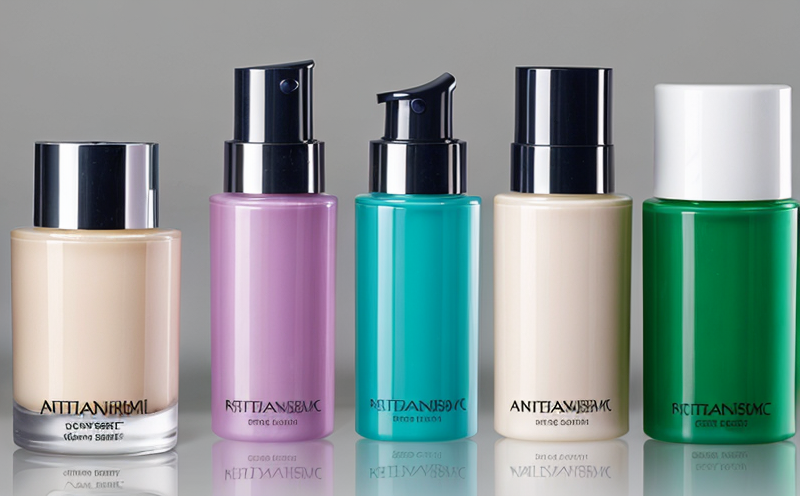Preservative Effectiveness in Cosmetic Powders
The efficacy of preservatives in cosmetic powders is a critical aspect of product safety and shelf life. Preservatives play a pivotal role in preventing microbial growth, ensuring the stability and quality of cosmetic products that come into prolonged contact with consumers. In this section, we will delve into the testing methodologies used to assess the effectiveness of preservatives in cosmetic powders.
Preservative efficacy tests are designed to evaluate whether the chosen preservatives can effectively inhibit the growth of microorganisms such as bacteria and fungi under specific conditions relevant to real-world use. These conditions include high humidity, elevated temperatures, and extended storage periods, simulating the shelf life of products in consumer environments. The primary goal is to ensure that the cosmetic powders remain stable and safe for consumers.
The testing process typically involves inoculation of the cosmetic powder with various microbial strains, followed by incubation under controlled environmental conditions. Following this period, the samples are analyzed for any signs of microbial growth or activity. This approach allows for a comprehensive evaluation of the preservative's performance in protecting against spoilage and contamination.
For accurate results, it is essential to follow international standards such as ISO 22716:2011, which provides guidelines for good manufacturing practices in cosmetics. Compliance with these standards ensures that the testing methods are robust and reliable. Additionally, it is crucial to use appropriate specimen preparation techniques, including homogenization of samples and accurate weighing, to ensure consistent results.
The choice of preservatives can vary widely depending on the specific cosmetic powder formulation. Common preservatives include parabens, quats (quaternary ammonium compounds), and phenoxyethanol. Each type has its own efficacy profile and may be more or less effective in different formulations. Therefore, it is important to select a preservative that aligns with the product's intended use and meets regulatory requirements.
The testing process for preservative effectiveness in cosmetic powders involves several key steps:
- Selection of appropriate microbial strains
- Inoculation of the cosmetic powder samples
- Incubation under controlled environmental conditions
- Analysis of sample stability and microbial growth
The results of these tests are critical for ensuring product safety and compliance with regulatory standards. Regulatory bodies, such as the European Union Cosmetics Regulation (EC 1223/2009), require that cosmetic products be tested to ensure they do not pose a risk to consumers.
Understanding the efficacy of preservatives in cosmetic powders is crucial for quality managers and compliance officers responsible for ensuring product safety. By conducting these tests, R&D engineers can refine formulations to enhance product stability and shelf life. For procurement teams, this information is essential for selecting reliable suppliers who adhere to strict testing protocols.
Given the global nature of the cosmetics industry, it is important that test results are internationally recognized and accepted across different markets. This ensures consistent quality standards worldwide and facilitates trade between countries with varying regulatory requirements.
Benefits
The testing of preservative effectiveness in cosmetic powders provides numerous benefits to the cosmetics industry and consumers alike. Ensuring the efficacy of preservatives helps maintain product quality and safety, extending shelf life and reducing the risk of contamination. This not only enhances consumer trust but also supports brand reputation and loyalty.
For manufacturers, testing for preservative effectiveness ensures compliance with international standards and regulations. It enables the development of safer products that meet global market demands. Additionally, successful test results can lead to reduced product recalls and associated costs.
From a sustainability perspective, effective preservatives help minimize waste by ensuring that products remain stable and usable until their expiration date. This aligns with broader industry efforts towards more sustainable practices and responsible consumption.
International Acceptance and Recognition
- ISO 22716:2011 - Cosmetics - Good Manufacturing Practices
- European Union Cosmetics Regulation (EC 1223/2009)
Preservative efficacy tests in cosmetic powders are widely recognized and accepted internationally. Compliance with international standards ensures that test results are consistent across different markets, facilitating trade between countries with varying regulatory requirements.
The European Union Cosmetics Regulation (EC 1223/2009) mandates that all cosmetics sold within the EU undergo testing for preservative efficacy to ensure product safety and compliance. Similarly, ISO 22716:2011 provides guidelines for good manufacturing practices in cosmetics, which include robust procedures for preservative efficacy testing.
The acceptance of these tests is crucial for manufacturers who wish to export their products globally. By adhering to international standards, they can ensure that their products meet the safety and quality expectations of consumers worldwide.
Environmental and Sustainability Contributions
The testing of preservative effectiveness in cosmetic powders also contributes positively to environmental sustainability. By ensuring product stability and extending shelf life, manufacturers can reduce waste and promote responsible consumption. This aligns with broader industry efforts towards more sustainable practices.
In addition, the use of preservatives helps minimize the need for frequent product replacements due to spoilage or contamination. This reduces the demand for raw materials and energy in producing new products, thereby contributing to a more sustainable supply chain.
Furthermore, effective preservative testing supports the development of safer and longer-lasting cosmetic powders, which can be used until their expiration date without compromising quality. This not only enhances consumer satisfaction but also aligns with the principles of circular economy practices in the cosmetics industry.





